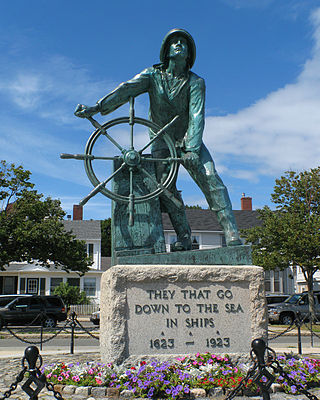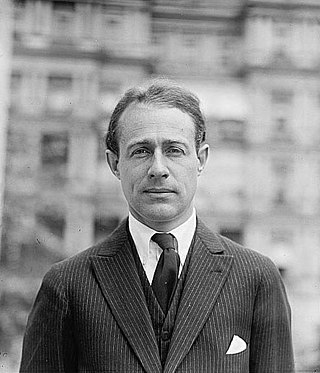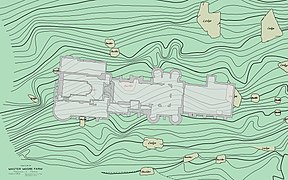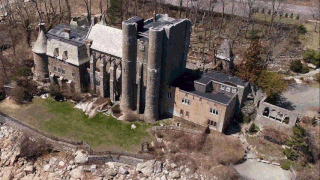
Gloucester is a city in Essex County, Massachusetts, in the United States. It sits on Cape Ann and is a part of Massachusetts's North Shore. The population was 29,729 at the 2020 U.S. Census. An important center of the fishing industry and a popular summer destination, Gloucester consists of an urban core on the north side of the harbor and the outlying neighborhoods of Annisquam, Bay View, Lanesville, Folly Cove, Magnolia, Riverdale, East Gloucester, and West Gloucester.

Gloucester Cathedral, formally the Cathedral Church of St Peter and the Holy and Indivisible Trinity, in Gloucester, England, stands in the north of the city near the River Severn. It originated with the establishment of a minster, Gloucester Abbey, dedicated to Saint Peter and founded by Osric, King of the Hwicce, in around 679. The subsequent history of the church is complex; Osric's foundation came under the control of the Benedictine Order at the beginning of the 11th century and in around 1058, Ealdred, Bishop of Worcester, established a new abbey "a little further from the place where it had stood". The abbey appears not to have been an initial success, by 1072, the number of attendant monks had reduced to two. The present building was begun by Abbott Serlo in about 1089, following a major fire the previous year.

Peabody & Stearns was a premier architectural firm in the Eastern United States in the late 19th century and early 20th century. Based in Boston, Massachusetts, the firm consisted of Robert Swain Peabody (1845–1917) and John Goddard Stearns Jr. (1843–1917). The firm worked on in a variety of designs but is closely associated with shingle style.

Bryn Athyn Cathedral is the episcopal seat of the General Church of the New Jerusalem, a denomination of Swedenborgianism. The main building is of the Early Gothic style, while the adjoining structures are of a transitional period reflective of a combination of both Gothic and Norman styles. The exterior appearance of the cathedral itself is reminiscent of Gloucester Cathedral in England.

Romanesque Revival is a style of building employed beginning in the mid-19th century inspired by the 11th- and 12th-century Romanesque architecture. Unlike the historic Romanesque style, Romanesque Revival buildings tended to feature more simplified arches and windows than their historic counterparts.

John Hays Hammond was an American mining engineer, diplomat, and philanthropist. He amassed a sizable fortune before the age of 40. An early advocate of deep mining, Hammond was given complete charge of Cecil Rhodes' mines in South Africa and made each undertaking a financial success. He was a main force planning and executing the Jameson Raid in 1895. It was a fiasco and Hammond, along with the other leaders of the Johannesburg Reform Committee, was arrested and sentenced to death. The Reform Committee leaders were released after paying large fines, but like many of the leaders, Hammond escaped Africa for good. He returned to the United States, became a close friend of President William Howard Taft, and was appointed a special ambassador. At the same time, he continued to develop mines in Mexico and California and, in 1923, he made another fortune while drilling for oil with the Burnham Exploration Company.

John Hays Hammond Jr. was an American inventor known as "The Father of Radio Control". Hammond's pioneering developments in electronic remote control are the foundation for all modern radio remote control devices, including modern missile guidance systems, unmanned aerial vehicles (UAVs), and the unmanned combat aerial vehicle (UCAVs). Of Hammond's many individual inventions, the inventions which have seen the most significant application are the variable pitch or controlled pitch propellers and single dial radio tuning. He was the son of mining engineer John Hays Hammond, Sr.

Effie M. Morrissey is a schooner skippered by Robert Bartlett that made many scientific expeditions to the Arctic, sponsored by American museums, the Explorers Club and the National Geographic Society. She also helped survey the Arctic for the United States Government during World War II. She is currently designated by the United States Department of the Interior as a National Historic Landmark as part of the New Bedford Whaling National Historical Park. She is the State Ship of Massachusetts.

Medieval architecture in North America is an anachronism. Some structures in North America can however be classified as medieval, either by age or origin. In some rare cases these structures are seen as evidence on pre-Columbian trans-oceanic contact. Although much of this is pseudoscience, these buildings are of interest to American scholars of medieval architecture.

The Johnston–Felton–Hay House, often abbreviated Hay House, is a historic residence at 934 Georgia Avenue in Macon, Georgia. Built between 1855 and 1859 by William Butler Johnston and his wife Anne Tracy Johnston in the Italian Renaissance Revival style, the house has been called the "Palace of the South." The mansion sits atop Coleman Hill on Georgia Avenue in downtown Macon, near the Walter F. George School of Law, part of Mercer University. It was designated a National Historic Landmark in 1973 for its architectural uniqueness.

Glencairn is a castle-like mansion in Bryn Athyn, Pennsylvania, that was home to the Pitcairn family for more than 40 years. Now the Glencairn Museum, it contains a collection of about 8,000 artworks, mostly religious in nature, from cultures such as ancient Egypt, ancient Greece, the Roman Empire and medieval Europe, as well as Islamic, Asian, and Native American works. The museum is affiliated with The New Church, and the building is on the National Register of Historic Places.

Natalie Hays Hammond (1904–1985) was an American artist, writer, and inventor. She worked in the fields of painting, miniatures, textile arts, and costume and set design. She worked with Martha Graham and Alice D. Laughlin to create the first woman-produced Broadway theatre production.

The Estey Organ Company was an organ manufacturer based in Brattleboro, Vermont, founded in 1852 by Jacob Estey. At its peak, the company was one of the world's largest organ manufacturers, employed about 700 people, and sold its high-quality items as far away as Africa, Great Britain, Australia, and New Zealand. Estey built around 500,000 to 520,000 pump organs between 1846 and 1955. Estey also produced pianos, made at the Estey Piano Company Factory in New York City.

Richard Ellsasser was an American concert organist, composer, and conductor who was primarily active during the 1940s to 1960s.
This is an incomplete list of historic properties and districts at United States colleges and universities that are listed on the National Register of Historic Places (NRHP). This includes National Historic Landmarks (NHLs) and other National Register of Historic Places listings. It includes listings at current and former educational institutions.

The Newton City Hall and War Memorial is a historic city hall and war memorial building located in the village of Newton Centre in Newton, Massachusetts. Built in 1932 in the Colonial Revival style, the building was designed by Allen and Collens, with landscaping by the renowned Olmsted Brothers. The building's purpose was to serve as a new city hall, and as a memorial to the city's soldiers of the First World War. On February 16, 1990, it was added to the National Register of Historic Places.

H. (Henry) Neill Wilson was an architect with his father James Keys Wilson in Cincinnati, Ohio; on his own in Minneapolis, Minnesota; and for most of his career in Pittsfield, Massachusetts. The buildings he designed include the Rookwood Pottery building in Ohio and several massive summer cottages in Berkshire County, Massachusetts.























